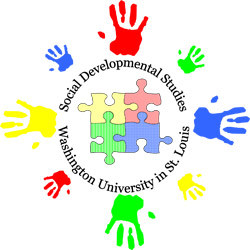Using an innovative statistical approach, a research team from Washington University School of Medicine in St. Louis and the University of California, Los Angeles, has identified two regions of DNA linked to autism. They found the suspicious DNA with a much smaller sample of people than has been used traditionally in searches for autism genes.

“Although we once believed you either had this condition or you didn’t, we now know that there’s a continuous distribution of autism symptoms from very mild to very severe,” Constantino says.
That means in families where a child is autistic, parents and unaffected siblings may have very subtle communication impairments or behavioral tendencies that would be considered autistic only in their most severe forms. Those traits may indicate genetic tendencies that contribute to autism and now can be measured with a diagnostic interview tool called the Social Responsiveness Scale (SRS), which Constantino developed with his colleague Richard D. Todd, Ph.D., M.D., at Washington University.
Using the SRS to gather data about both children with autism and their unaffected parents and siblings allowed the researchers to take a more quantitative approach to find subtle symptoms of autism that aggregate in families. In all, they used the SRS to study members of 99 families who were part of the Autism Genetic Resource Exchange (AGRE).
“We characterized everyone using the quantitative measures that the Social Responsiveness Scale provides,” Constantino explains. “With the SRS, we looked not just at whether a person has autism but more systematically at the degree of autistic impairment. Then we analyzed their genetic material and found significant linkage to these symptoms on regions of chromosomes 11 and 17.”
Older survey methods also had flagged those regions of DNA, but those studies used samples more than three times larger than this study. Constantino and Geschwind believe the fact that they identified the same areas of DNA means that their quantitative method can find genes related to autism and that if used in bigger samples, it may be able isolate other suspicious regions of DNA that studies using traditional methods can’t find.
The researchers now have begun to make more detailed maps of the chromosome regions related to autism. They’re also using the SRS to study more families.
In theory, the greater statistical power of their method will be magnified as the researchers study larger numbers of people. They say that power may help them isolate many more genes that might contribute to autism spectrum disorders. They’ll also continue to look closely at genes in the suspicious DNA regions identified so far and try to figure out what’s going on at the genetic level to make some children autistic.
“We know that the dopamine D4 receptor gene is in the region we’ve identified on chromosome 11,” Constantino says. “That receptor is important in many brain functions. But there are many genes in the regions we’ve identified, and our focus is on refining the signal so that we can reduce the number of candidate genes and then look more closely at how those genes might be contributing to this devastating disorder.”
Constantino believes ultimately the search will lead to the discovery of many genes that contribute to autism and that scientists may need to find several of them before they begin to understand how genetic variations actually lead to the disorder.
“The genetic factors tend to interact with one another,” he says. “One gene might increase risk by 10 percent, but two genes, in the proper combination, might increase the risk 10-fold. We expect that as we find additional susceptibility factors the amount of their causal influence will increase exponentially, and we’ll get a clearer picture of how genes contribute to autism and may even find ways to intervene.”
The Autism Genetic Resource Exchange (AGRE) is a collaborative gene bank designed to speed to pace of research to find the genes and ultimately the cure for autism. AGRE was established by the non-profit foundation Cure Autism Now.
For more information about autism studies at Washington University, please call Teddi Gray, research coordinator for the Social Developmental Studies program at (314) 286-0068.
Duvall JA, Lu A, Cantor RM, Todd RD, Constantino JN, Geschwind DH. A quantitative trait locus analysis of social responsiveness in multiplex autism families. American Journal of Psychiatry, vol. 164:4, pp. 656-662 April 2007
This research was supported by the National Institutes of Health and Cure Autism Now.
Related papers
Constantino JN, Todd RD. Intergenerational transmission of subthreshold autistic traits in the general population. Biological Psychiatry, vol. 57:6, pp. 655-660, March 15, 2005.
Constantino JN, Todd RD. Autistic traits in the general population. Archives of General Psychiatry, vol. 60:6, pp. 524-530, May 2003.
Washington University School of Medicine’s full-time and volunteer faculty physicians also are the medical staff of Barnes-Jewish and St. Louis Children’s hospitals. The School of Medicine is one of the leading medical research, teaching and patient care institutions in the nation, currently ranked fourth in the nation by U.S. News & World Report. Through its affiliations with Barnes-Jewish and St. Louis Children’s hospitals, the School of Medicine is linked to BJC HealthCare.